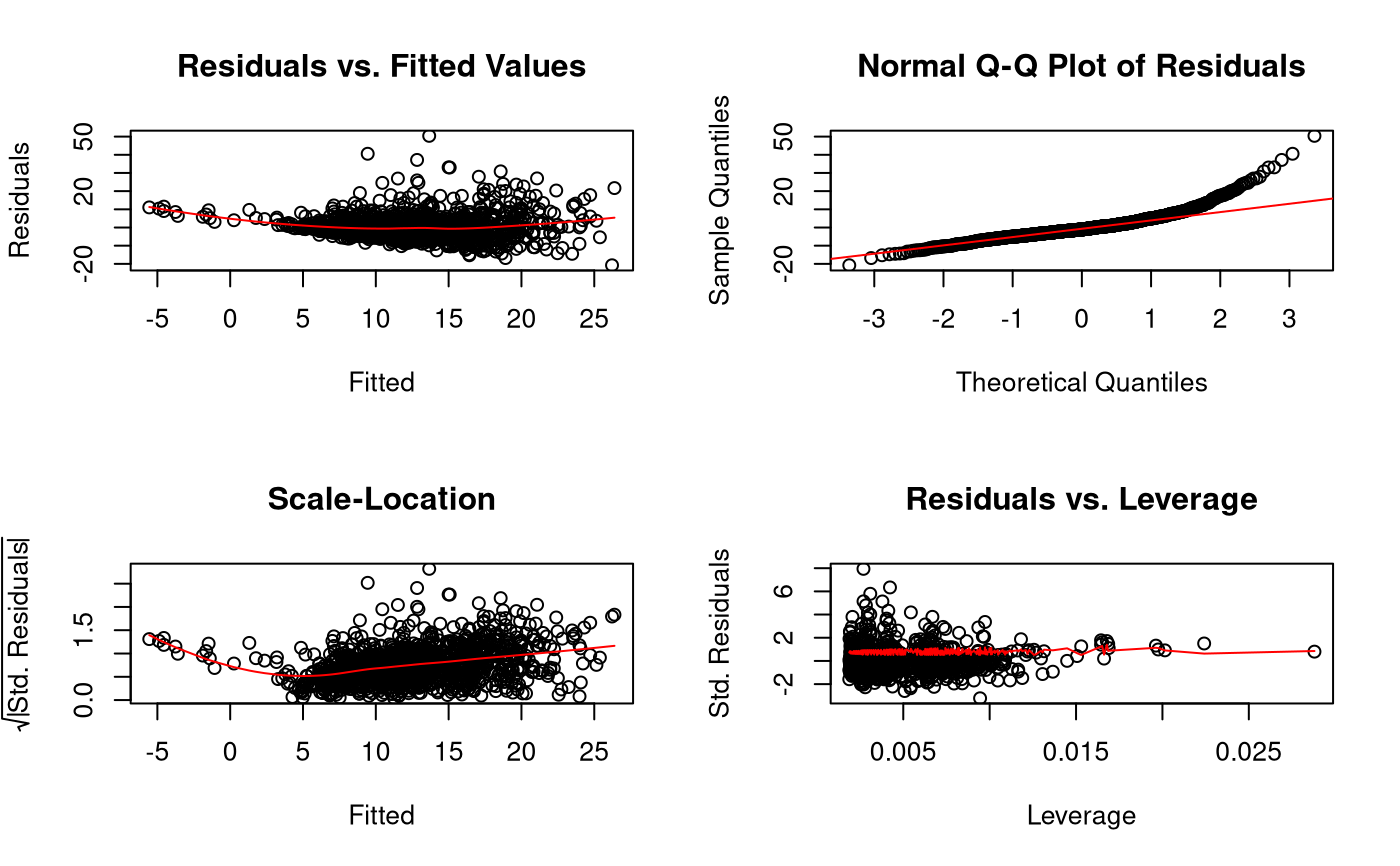Displays a plot with four panels:
residuals vs. fitted values
normal qq plot of residuals
scale location
residuals vs. leverage
.residual.plot(yhat, epsilonhat, tepsilonhat, h)
Arguments
| yhat | Numeric vector of length |
|---|---|
| epsilonhat | Numeric vector of length |
| tepsilonhat | Numeric vector of length |
| h | Numeric vector of length |
Details
Based on the diagnostic plots in the car package.
See also
Other plotting functions:
.scatter.plot()
Examples
model <- lm( wages ~ gender + race + union + education + experience, data = jeksterslabRdatarepo::wages ) yhat <- as.vector(predict(model)) epsilonhat <- as.vector(residuals(model)) tepsilonhat <- as.vector(rstudent(model)) h <- as.vector(hatvalues(model)) .residual.plot( yhat = yhat, tepsilonhat = tepsilonhat, epsilonhat = epsilonhat, h = h )
